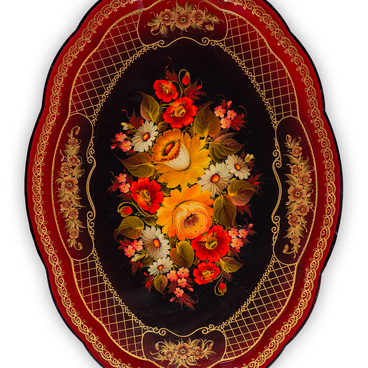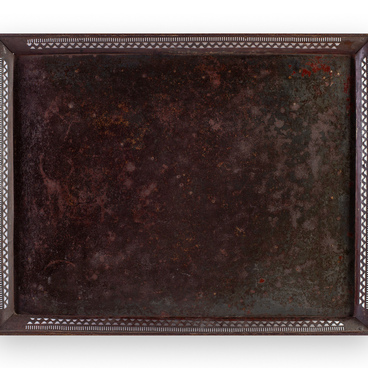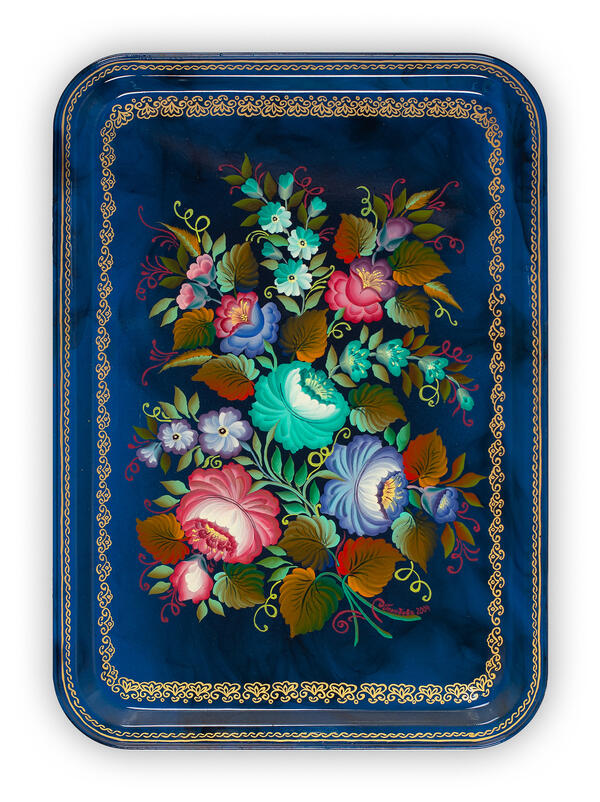The multi-section tray from the collection of the Nizhny Tagil Museum is a replica of a 19th-century item of decorative and applied art. The original tray was produced by the Nizhny Tagil workshop of Filimon Yakovlevich Nabolin. It is kept in the collection of the State Hermitage Museum.
The replica was painted by Alevtina Nikolayevna Golubeva (1960–2019), a master of lacquer painting on metal, using a 19th-century round forged tray. By the time this tray was painted, Alevtina Golubeva was already an experienced craftswoman. Between 1978 and 1992, she worked as an artist at the Emalposuda (Enamelware) factory in Nizhny Tagil. She was part of the workshop’s creative team where she designed traditional floral compositions.
She received this commission a year before graduating from the School of Art and Graphics of the Nizhny Tagil State Pedagogical Institute. After completing her higher professional education, Alevtina Golubeva returned to the Ural School of Applied Arts as a teacher.
The center of the composition is formed by a Nizhny Tagil rose designed using the quick single-layer painting technique. The artist would pick up two paints — white and colored —with one brush at the same time. She mastered two variations of the two-color brushstroke technique: with the white stroke facing inward or outward. She painted the central sector with several shades of green, making it resemble malachite, a Ural ornamental stone.
The green background is often found on Nizhny Tagil trays because many artists used the paint known as “malachite green”. It was produced of low-quality malachite that was unsuitable for making jewelry and was found in large amounts on the stockpiles of Vysokaya Mountain.
Inside each section, the artist arranged the flowers and branches so that the viewer was looking at the bouquet from above. She did not paint the stems. This technique is known as “center composition”. This means that the tray can be viewed from any angle without changes in the visual perception. The trays painted using this technique had neither a top nor a bottom.



